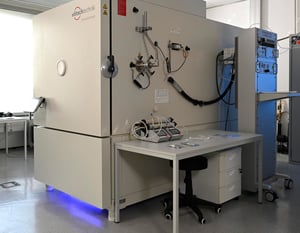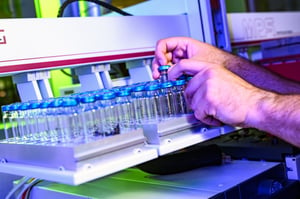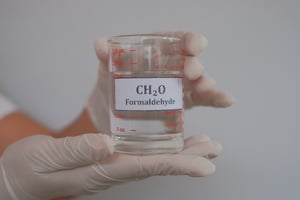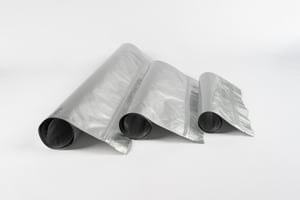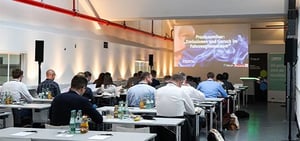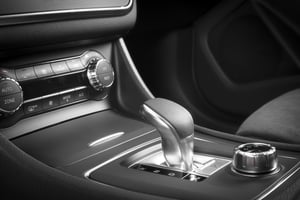
Fogging
Determination of the fogging behavior of materials used in vehicle interiors
FOGGING TEST IN THE
AUTOMOBILE INTERIOR
FOCUS ON THE MECHANICAL RESILIENCE OF TEXTILES
The tear and tensile strength of textiles is a decisive quality factor in the automotive industry. Precise tests are carried out to ensure the durability and safety of materials. Standardized test methods such as maximum tensile force, tear propagation force, static elongation, separation force, seam slippage strength and seam fatigue are used. These tests provide important insights into the mechanical properties of textiles and their behavior under load - essential for the highest standards of quality and reliability.
- Maximum tensile force / elongation
- Tear propagation force
- Static or permanent elongation
- Separating force
- Seam slippage resistance
- Seam fatigue
Maximum tensile force / elongation
Tensile strength tests, for example in accordance with DIN EN ISO 13934-1, also use standardized samples that are loaded axially. The test measures the maximum force required to tear the material. In addition, the elongation until breakage is often recorded in order to draw further conclusions about the behavior of the material.
Tear propagation force
Static or permanent elongation
Separating force
Seam slippage resistance
Seam fatigue
Methods for determining the tear and tensile strength of textiles are:
-
Maximum tensile force / elongation according to DIN EN ISO 13934-1
-
Tear propagation force according to DIN 13937-2
-
Static or permanent elongation according to DIN EN 15977
-
Separation force according to DIN EN ISO 2411
-
Seam shear strength according to DIN EN ISO 13935-1
- Seam fatigue

Fogging test methods
- DIN 75201-A (reflectrometric)
- DIN 75201-B (gravimetric)
- PV 3015 (Volkswagen)
- GMW 3235-A (General Motors Worldwide)
- PSA D45 1727
- and much more.
Are you looking for an exam? Standard? Specifications?
Accredited & certified tests
CONTACT OUR EXPERTS
Description. Lorem ipsum dolor sit amet, consetetur sadipscing elitr, sed diam nonumy eirmod tempor invidunt ut labore et
- Tab Title






Frequently asked questions about the fogging test
The sample quantities required for a fogging test depend on the standard and the test method used. Here are the general guidelines:
1. standard DIN 75201 (type A and type B)
-
Type A (glass plate method):
A sample quantity of 10 cm² is typically required. The sample is placed on a heated plate in a sealed chamber and the volatiles released condense on a glass plate above. -
Type B (aluminum foil method):
Similar to type A, a sample volume of approximately 10 cm² is used. However, the volatile substances condense on a cooled aluminum foil.
2. standard ISO 6452 (international standard)
- Sample quantity:
Again, a sample size of about 10 cm² is typically required to evaluate the amount of volatiles released at elevated temperature.
3. other specific requirements
Depending on the specific requirements of the customer or OEM standards, sample quantities may vary. It is important to check the respective standards or test requirements carefully.
Method A - Reflectometric method:
- Principle: This method measures the change in reflectivity on a glass plate on which volatile components from the material sample are deposited.
- Procedure: A material sample is heated in a beaker while a glass plate above it is cooled to 21°C. The temperature difference causes the volatile components to condense on the glass plate. The reflectance index of the fogged glass plate is then measured to determine the amount of condensed material.
- Application: This method is particularly suitable for materials for which an exact determination of the optical fog effect is required.
Method B - Gravimetric method:
- Principle: This method measures the weight of condensed volatiles on an aluminum foil.
- Procedure: The material sample is heated in a beaker while an aluminum foil disc is cooled to 21°C. After 16 hours, the amount of condensed material on the foil is weighed.
- Application: This method is ideal for an accurate quantitative determination of the amount of condensed volatiles.
EMISSIONS & ODOR
Formaldehyd in Fahrzeugen: Herausforderungen für die Automobilindustrie
Read moreStellantis: Freigabe für Emissionsprüfungen erfolgreich (VIAQ)
Read moreVDA 277 vs. VDA 278: Was ist der Unterschied?
Read moreGeruchsunterschiede bei Polypropylen: Die Rolle von Faserverstärkung und Verarbeitungsparametern
Read moreWarum sind die Einheiten der Ergebnisse von Prüfungen der Werkstoffemissionen eigentlich so unterschiedlich?
Read moreGrenzwerte für Formaldehyd und Formaldehydabspaltern in Fahrzeugen
Read moreFREQUENTLY ASKED QUESTIONS ABOUT HAPTICS AND COMFORT RATINGS
- Visual inspection
- Tactile tests
- Comfort analyses
- Long-term use tests


